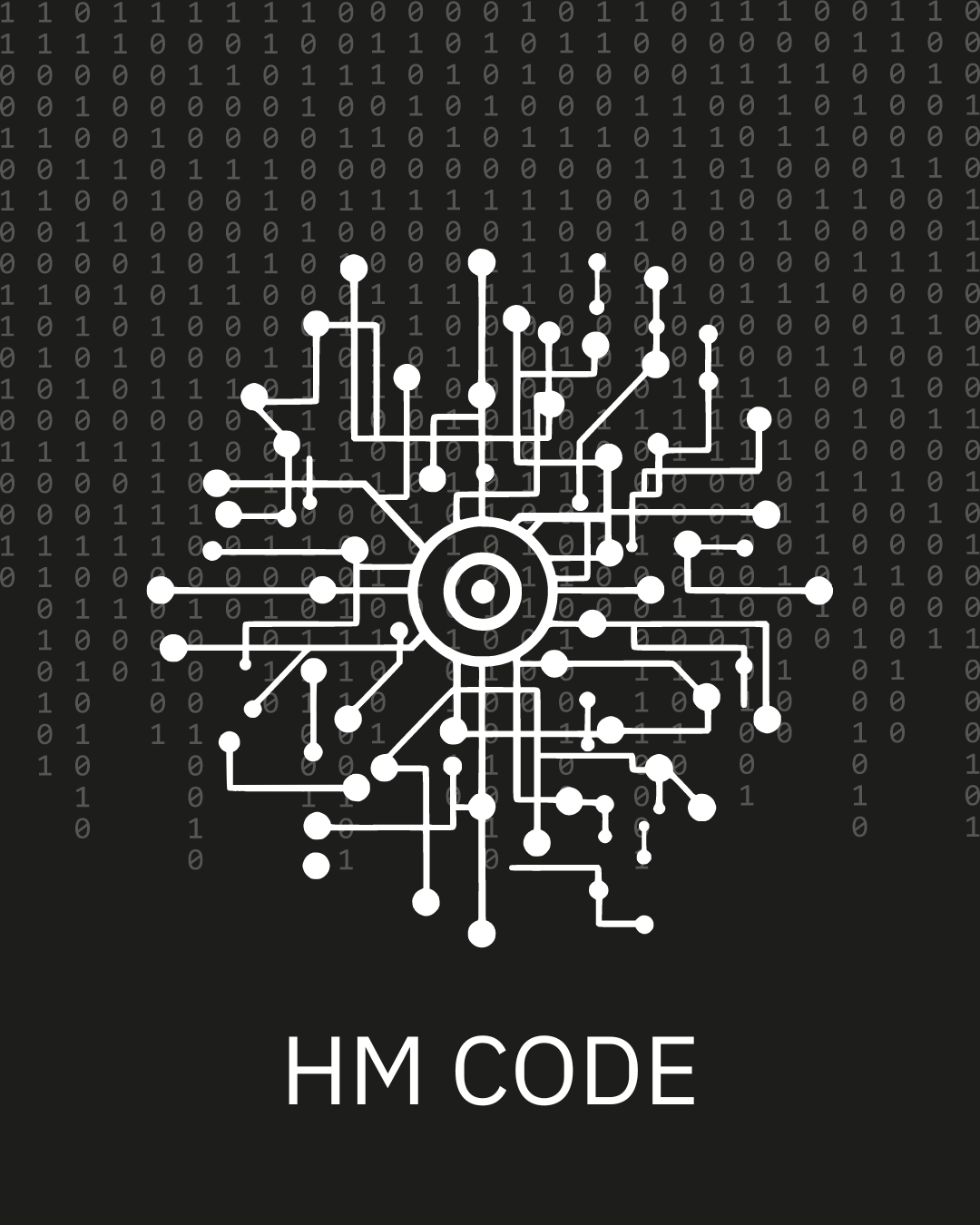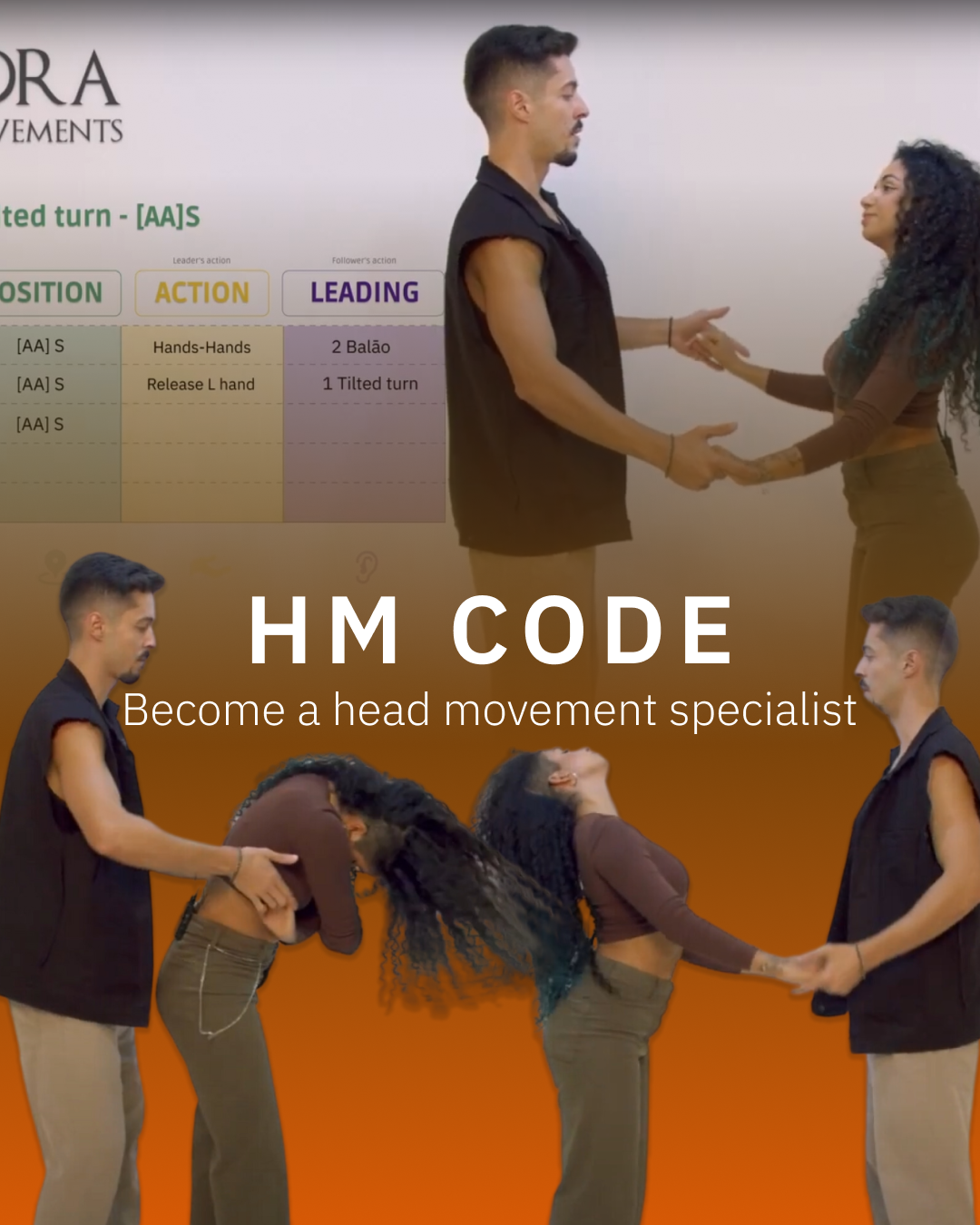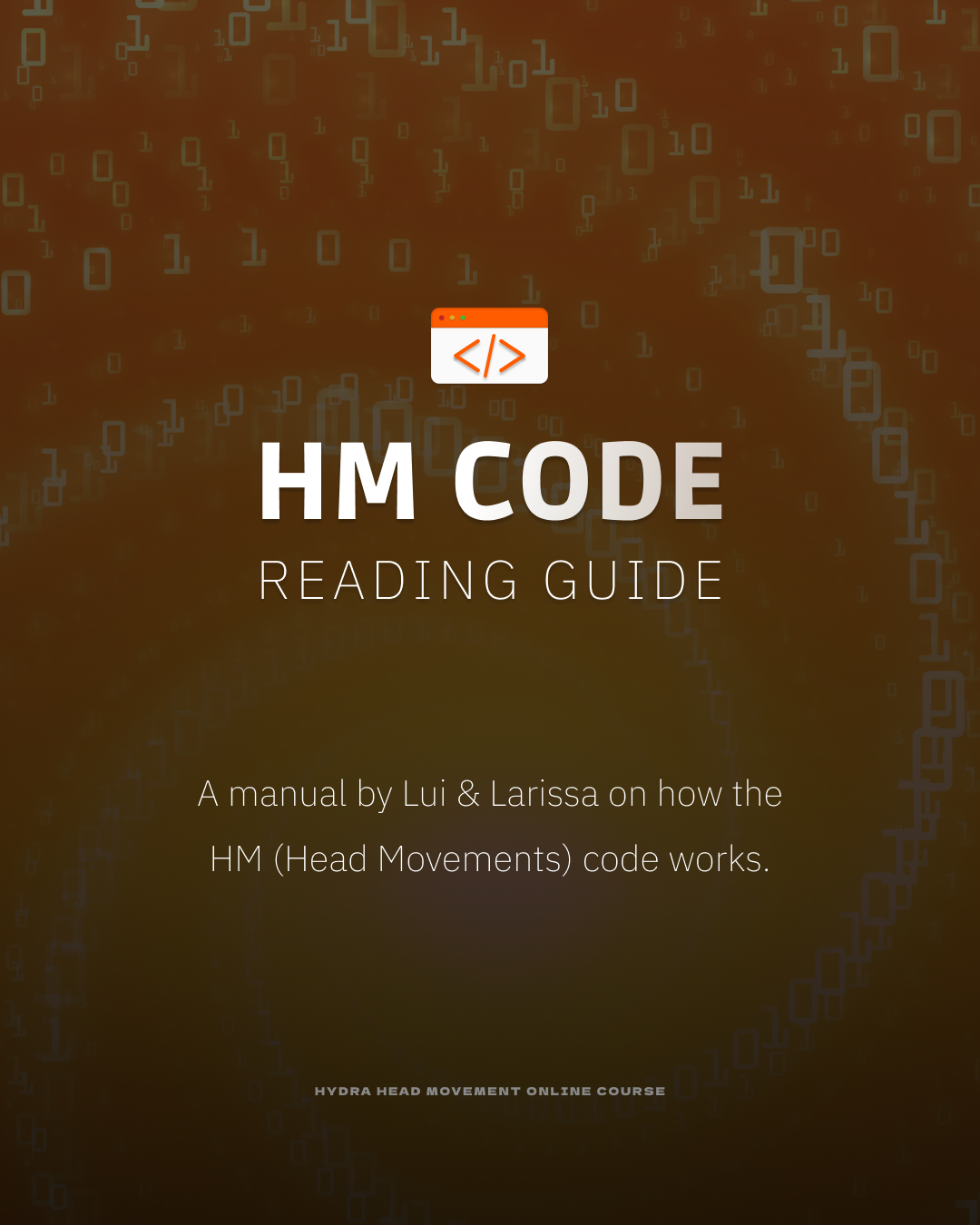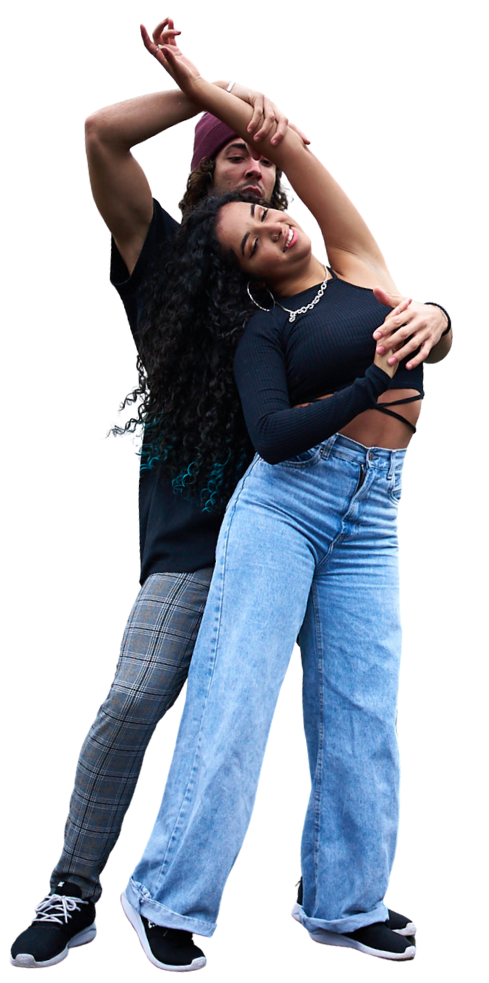There are no items in your cart
Add More
Add More
| Item Details | Price | ||
|---|---|---|---|



The HM Code is a unique system created by Lui & Larissa to document and teach head movements in Brazilian Zouk.
This code provides a clear and structured way to learn, understand, and perform head movements, allowing dancers to improve their technique and fluency in executing complex sequences.
The primary purpose of the HM Code is to provide a written method to describe sequences of Zouk-style head movements. This helps dancers visualize, practice, and refine their head movements both in training and social dance settings.
The code is based on three fundamental pillars:
Describes the body positions of both the leader and follower.
Details the movements and connections initiated by the leader.
Describes the follower’s response or movement based on the leader’s lead.
Each step of a sequence is broken down in this format, making it easier to follow and understand the flow of the dance.
These orientations are combined to describe how the leader and follower are positioned relative to each other. For example, [AA] indicates both the leader’s and follower’s anterior sides are facing each other, while [AP] shows the leader’s anterior side is facing the follower’s posterior side.
Additionally, head positions are indicated by directions such as:
In this section, the code outlines the specific points of connection between the leader and follower. For example:
Indicates the connection between the leader’s left hand and the follower’s right hand.
Indicates the release of the leader’s right hand from the follower’s right shoulder.
These connection points help define the transitions between movements, ensuring smooth and controlled execution of head movements.
The code also identifies the main types of head movements used in Zouk, including:

Additional variations like Chicote Lateral (Side to side whip) and Toalha (Towel) can also be introduced, providing dancers with a broad range of movements to incorporate into their practice.
The code specifies how many turns or partial turns a movement should include. For example:
Movements can also be performed in different directions, indicated by positive (clockwise) or negative (counterclockwise) signs.
Each action in the HM Code leads to a specific position, much like moves in a game of chess. By following the sequence of actions, dancers can flow from one movement to the next, creating a continuous, smooth head movement routine.
In the Hydra Head Movement Online Course, dancers can read the code and watch corresponding videos to ensure they are correctly interpreting the sequences. This approach makes it easier to practice, train, and master head movements in Zouk.
By breaking down the positions, actions, and leading techniques into a structured format, the code simplifies the learning process and enhances the dancer’s ability to flow through sequences with confidence and precision. With the help of the HM Code, you can elevate your head movements and bring more elegance and fluidity to your Zouk dancing.